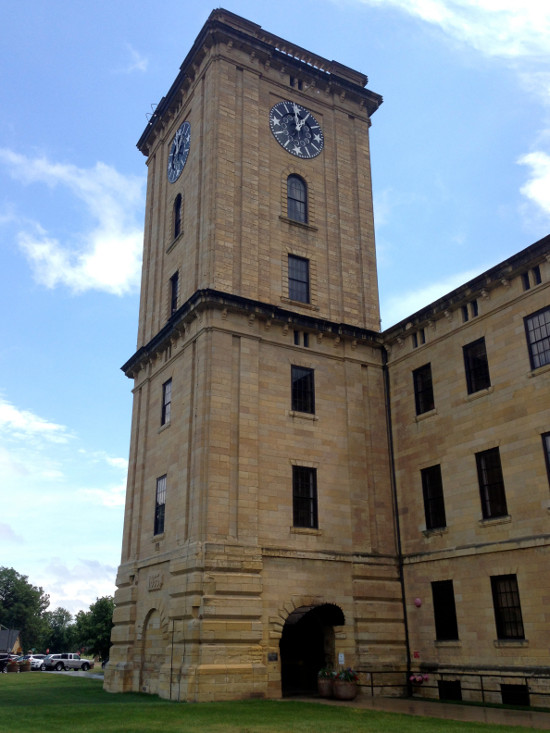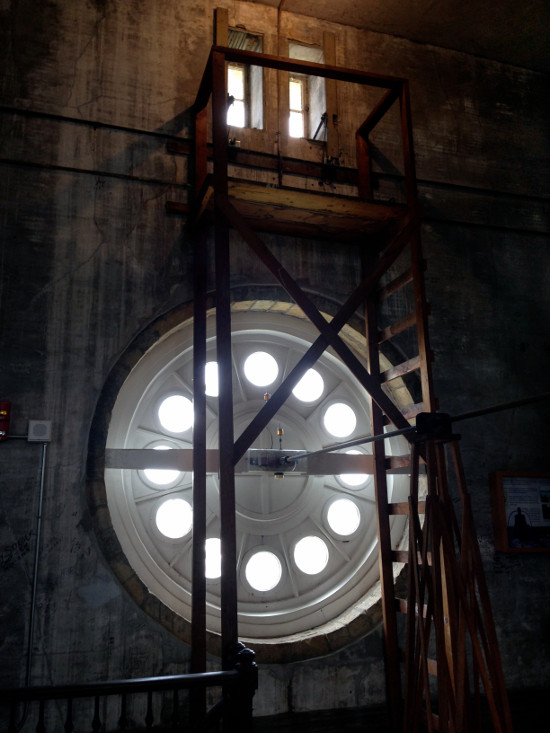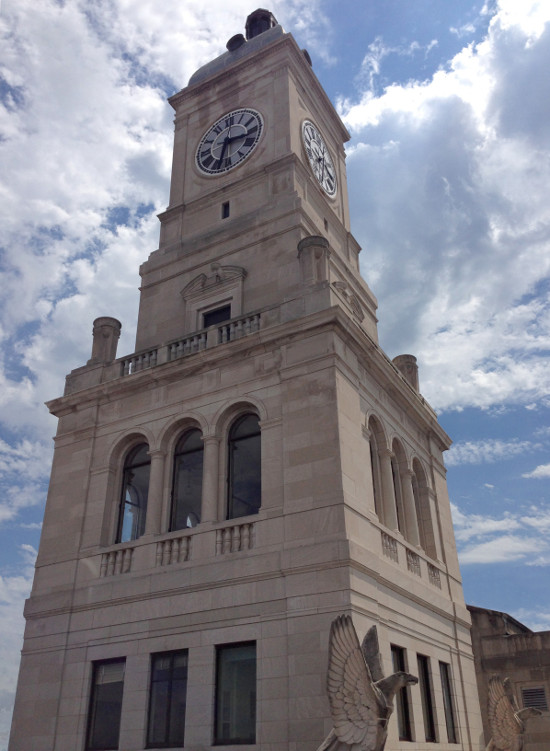
The impressive clocks atop the Rock Island Clock Tower building (at the western point of Arsenal Island) and the Wells Fargo building (at 201 West Third Street in Davenport) are highly visible landmarks - day or night. From a distance, the clocks appear to be about the size of a full moon - and, like the moon, are viewed against the sky.
The message conveyed by the height, location, and longevity of these towers is that the institutions associated with them are of great importance to our community. Gazing upward to read the time forces us to look up to these institutions.
Construction of the 117-foot-tall Rock Island Clock Tower began during the Civil War, when the island was still a prisoner-of-war camp for Confederate soldiers. Completed in 1868, it was the first Rock Island Arsenal building to be erected.

The original clock mechanism is still in use and is now the only clock of its type still functioning. Interestingly, the clock was initially synchronized with a sundial located on the island, resulting in a 13- to15-minute difference from "Chicago" or "Railroad" time. Uniform times zones would not be established until November 1883 with the goal of consistent time-keeping for the scheduling of train stops. The Arsenal clock was constructed shortly after the industrial revolution allowed for widespread manufacture of pocket watches.

The Wells Fargo Building was completed in 1927, a decade after the widespread manufacture of the wristwatch. Whereas the Arsenal tower is a masonry building - its foundation is four feet thick - the Wells Fargo building was constructed with a steel frame, allowing it to reach a height of 255 feet. It is still the tallest building in the Quad Cities, and its five-story classically styled tower remains the most prominent feature on Davenport's skyline.
The clock faces on both towers are immense and proportional to the clock towers; the Arsenal clocks are 12 feet in diameter, while the Wells Fargo clocks are 10 feet.
The design of the Arsenal clocks is unusual. Its distinctive white stars mark the quarter hours against the dials' black painted surface. It feels, unexpectedly, almost contemporary in that it uses symbols and simple lines to mark the hours instead of numbers. Conversely, the black Roman numerals of the Wells Fargo clocks are more conventional; they stand out against the translucent white clock faces that are lighted from within at night.
It is at night when the clocks are most impressive, their luminous faces like beacons - even in cities awash in streetlights and headlamps.
Each clock tower is meant to be imposing, though each has a slightly different message. The Wells Fargo building is forward-looking in its modern construction methods, yet it still retains the authority of classical architectural elements. The Rock Island Clock Tower uses architecture - primarily the Italian Renaissance style - to create a building that is formidable but not grandiose.
The Wells Fargo clock tower is now more than 80 years old. The Arsenal clock is more than 140. Yet their appearances haven't changed much over the passing decades. Paradoxically, the Quad City landmarks most associated with time seem unchanged by its passage.
Bruce Walters is a professor of art at Western Illinois University.
This is part of an occasional series on the history of public art in the Quad Cities. If there's a piece of public art that you'd like to learn more about, e-mail the location and a brief description to BD-Walters@wiu.edu.










